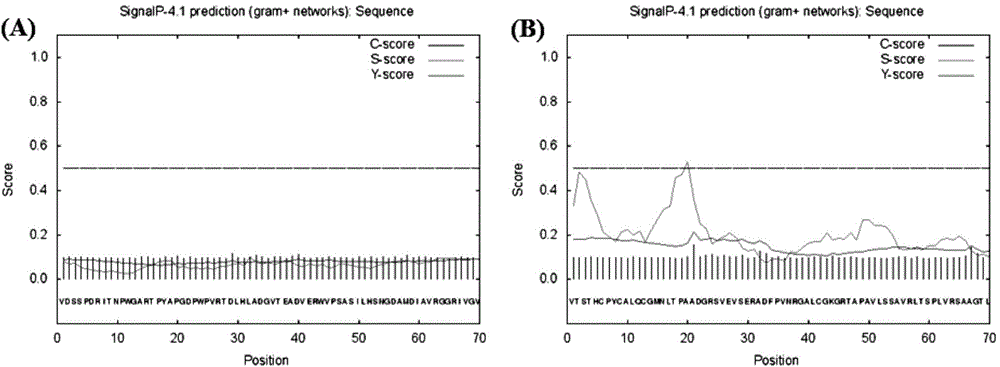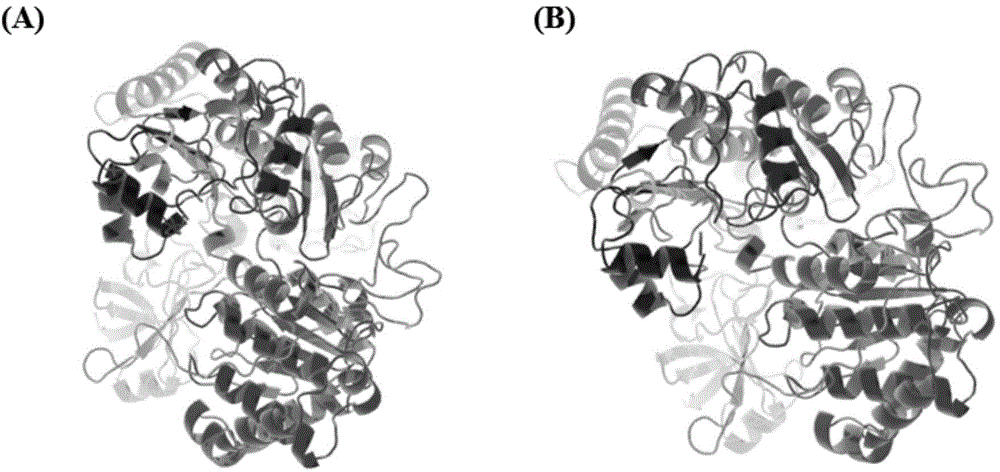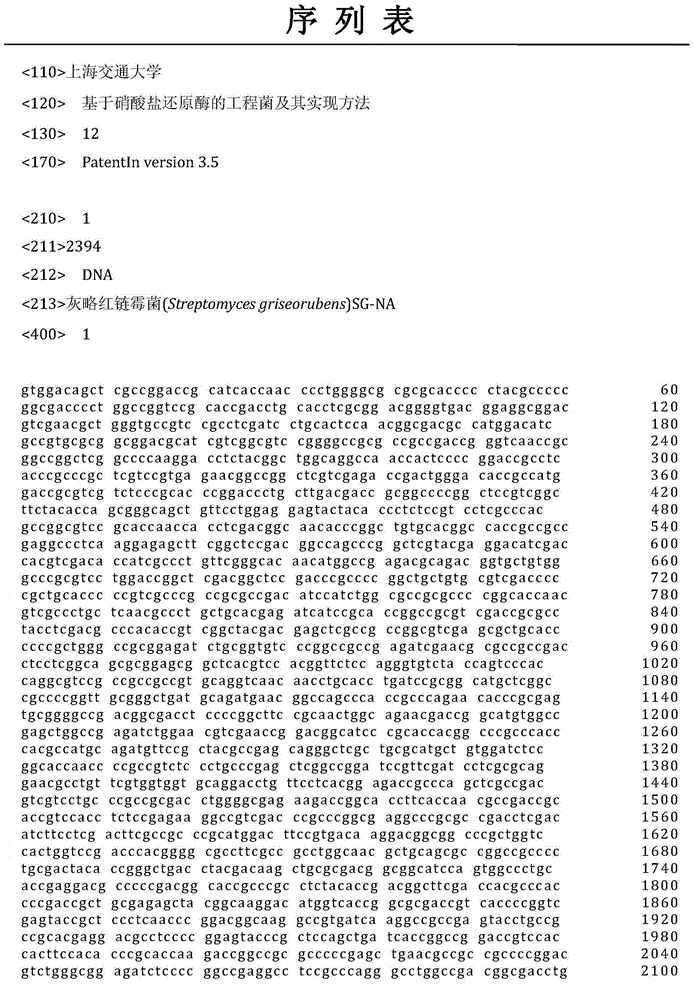Engineering bacteria based on nitrate reductase and implementation method of engineering bacteria
A reductase and nitrate technology is applied in the field of genes and engineering strains in the field of biological genetic engineering technology, which can solve problems such as inconvenience of use, loss of soil nitrogen, secondary pollution, etc., to ensure protein purity, maintain protein activity, The effect of stabilizing biological activity
- Summary
- Abstract
- Description
- Claims
- Application Information
AI Technical Summary
Problems solved by technology
Method used
Image
Examples
Embodiment 1
[0027] In this example, Streptomyces griseorubens was isolated from rotten straw collected in Pujiang Town, Shanghai, and its preservation number is CGMCC No.5706. The strain was inoculated in LB liquid medium and cultured at 32°C for 48h.
[0028] The above LB liquid medium components are: peptone 10.0g / L, yeast extract 5.0g / L, NaCl 10.0g / L, pH 6.8-7.2. Add 15.0‐20.0g / L agar to the liquid medium to obtain LB solid medium.
[0029] 1) Genomic DNA extraction of Streptomyces griseorubens: collect 2.0 mL of bacterial liquid, and centrifuge at 12000 rpm for 2 min. Discard the supernatant, collect the bacterial pellet, add 180μL lysozyme (20mg / mL) and 20μL EDTA solution (0.5M, pH8.0), treat at 37℃ for 45min, add 4μL RNase A (100mg / mL), shake and mix for 15s , placed at room temperature for 5 minutes, and then completed the remaining operations according to the instructions of the bacterial DNA extraction kit (TIANGEN) to obtain high-purity genomic DNA. The quality of genomic DNA...
Embodiment 2
[0044] Construction of nitrate reductase expression vector
[0045] 1) According to the sequence of nitrate reductase, design primers containing restriction sites, the sequence is as follows:
[0046] NA‐Nde I‐F: CCATATGGTGGACAGCTCGCCGGACCGCATC
[0047] NA‐EcoR V‐R:CGATATCTCA ATGATGATGATGATGATG TGCCGTGCTCCCCGTCG
[0048] NB‐Nco I‐F:ACCATGGTGACGTCCACGCACTGCCCCTACTGC
[0049] NB‐Hind III‐R:CCAAGCTTTCA ATGATGATGATGATGATG CGGGCGTACCGCCTCC
[0050] 2) Using Streptomyces griseorubens genomic DNA as a template, PCR amplification was performed with primers containing Nco I and Hind III restriction sites to obtain the nitrate reductase electron transfer subunit gene sequence, using DNA A‐Tailing Add A to Kit and connect to T‐Vector PMD TM 19‐T (TaKaRa), and the ligation product was transferred into DH5α E. coli. Positive clones were selected, and plasmids were extracted by shaking bacteria for sequencing. If correct, Nco I and Hind III were subjected to double enzyme digestion ...
PUM
 Login to View More
Login to View More Abstract
Description
Claims
Application Information
 Login to View More
Login to View More - R&D
- Intellectual Property
- Life Sciences
- Materials
- Tech Scout
- Unparalleled Data Quality
- Higher Quality Content
- 60% Fewer Hallucinations
Browse by: Latest US Patents, China's latest patents, Technical Efficacy Thesaurus, Application Domain, Technology Topic, Popular Technical Reports.
© 2025 PatSnap. All rights reserved.Legal|Privacy policy|Modern Slavery Act Transparency Statement|Sitemap|About US| Contact US: help@patsnap.com



